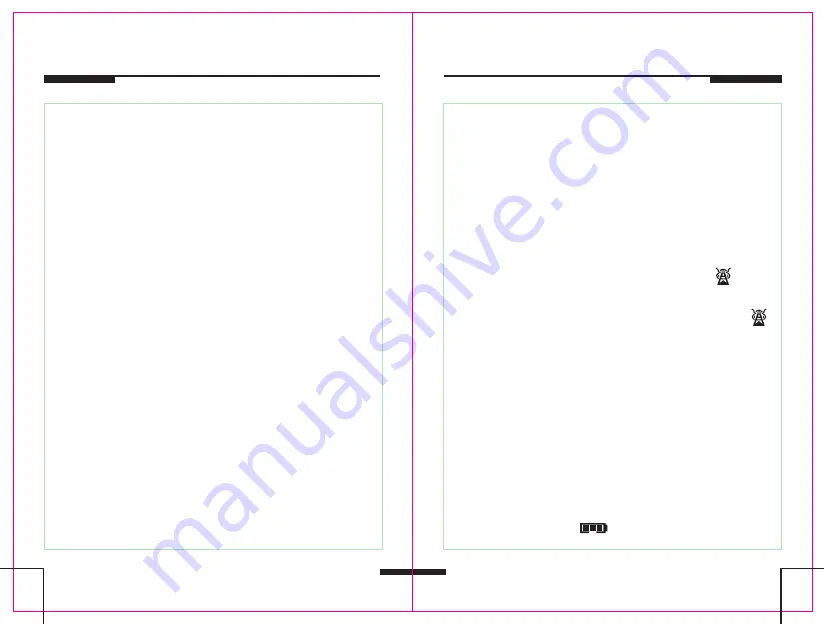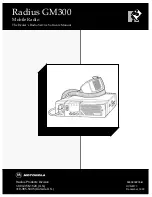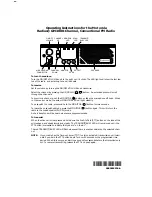
Radio’s operation
15
14
Charging information
1.
Open the radio
The radio will self-inspect for 1 second first, including
full-screen display, backlight lamps lit, and then issue a
prompt start-up (three pitch).
2.
After the self-inspection, LCD will show the last state
before Power off.
3.
Press PTT button, then transmitting, if the VOX is opened,
Then you will just talk to the MIC and transmitting, when
transmitting, the LED will change to red. And " " will be
Transmitting state.
4.
When Receiving, The LED will change to green, and " "
will be Receive state. When Vibration is opened and the signal
is received, the radio’s speaker will be audible, and the radio
will be 2 seconds vibration, one second stop, the cycle
will be repeated until the monitor key is pressed;
If the CTCSS or DCS for Receiver and the Transmitter are
not the same, Receiver will not hear anything except for green
light.
5.
When Battery voltage is less than 3.2 V, LCD will show "OFF",
the radio will stop transmit and Should be promptly charged.
When charging, the " " starts flashing, the radio can
receive, but cannot transmit.
Charging operation
1.
Plug the DC head of the adaptor into the DC jack of the radio.
2.
Plug the adaptor on the AC power outlet to keep normal
charging.
3.
When the radio is power on, Battery icon on the LCD begins
flashing, until the battery icon change to normal display (stop
flashing), It means fully charged, unplug the DC head to use
radio.
3.
When the radio is power off, the LED charges to red; when
the LED charges to green, It means fully charged.






























